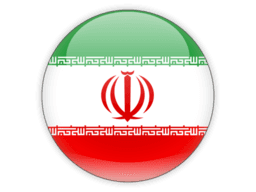
Regions of Iran
Explore 31 regions
Cities of Iran
Discover 337 cities across 31 regions
Alborz Province(8)
Ardabil Province(7)
Bushehr(10)
Chaharmahal and Bakhtiari(8)
East Azerbaijan(10)
Fars(25)
Gilan Province(15)
Golestan(9)
Hamadan Province(10)
Hormozgan(9)
Ilam Province(5)
Isfahan(24)
Kerman(14)
Kermanshah Province(10)
Khuzestan(26)
Kohgiluyeh and Boyer-Ahmad(5)
Kurdistan Province(8)
Lorestan Province(9)
Markazi(9)
Māzandarān(18)
North Khorasan(4)
Qazvin Province(4)
Qom Province(1)
Razavi Khorasan(13)
Semnan(6)
Sistan and Baluchestan(12)
South Khorasan Province(4)
Tehran(26)
West Azerbaijan(17)
Iran, officially known as the Islamic Republic of Iran, is a country located in Western Asia. It is the second-largest country in the Middle East and the 18th largest country in the world by land area. Iran shares borders with Iraq, Turkey, Armenia, Azerbaijan, Turkmenistan, Afghanistan, and Pakistan. The capital of Iran is Tehran, and the official language is Persian.
Iran has a rich history and culture dating back to ancient times, with influences from various empires such as the Persian Empire, the Mongol Empire, and the Safavid Empire. Iran is also home to many world-renowned landmarks and historical sites, such as the ancient ruins of Persepolis and the beautiful mosques of Isfahan.
Iran is an Islamic republic with a theocratic government, and the Supreme Leader of Iran is the highest ranking political and religious authority in the country. The President is the head of government and is responsible for overseeing the day-to-day operations of the country.
Iran's economy is primarily based on oil exports, making it one of the world's largest oil producers. The country also has a diverse manufacturing sector, including industries such as textiles, food processing, and electronics.
Tourism is a growing industry in Iran, with many visitors coming to experience the country's rich history, culture, and natural beauty. Iran has a well-developed tourism infrastructure, with many hotels, restaurants, and transportation options available to visitors.
Iran is also known for its delicious cuisine, which features a variety of herbs and spices, as well as dishes such as kebabs, stews, and rice-based dishes. Popular Iranian beverages include tea and doogh, a traditional yogurt-based drink.
Travelers to Iran should be aware of the country's strict cultural and religious customs, including dress codes and restrictions on alcohol consumption. It is also important to be mindful of political tensions and security concerns, particularly in border areas and regions with a history of unrest.
Telephone Code
98
Local Emergency Phone
Ambulance: 115; Fire: 123; Police: 110
Vaccinations
An International Certificate of Vaccination for yellow fever is required for travelers arriving from countries with a risk of yellow fever transmission and for travelers having transited through the airport of a country with risk of yellow fever transmission. See WHO recommendations.
Climate
Mostly arid or semiarid, subtropical along Caspian coast
Currency (Code)
Iranian rials (IRR)
Electricity/Voltage/Plug Type(s)
230 V / 50 Hz / plug types(s): C, F
Major Languages
Persian Farsi, Azeri and other Turkic dialects, Kurdish, Gilaki and Mazandarani, Luri, Balochi, Arabic
Major Religions
Muslim 99.4% (Shia 90-95%, Sunni 5-10%), other (includes Zoroastrian, Jewish, and Christian) 0.3%
Potable Water
Yes, but some opt for bottled water
International Driving Permit
Suggested
Road Driving Side
Right
Tourist Destinations
Persepolis; Chogha Zanbil; Anzali Lagoon; Chalus Road; Naqsh-e Jahan Square; Shushtar Historical Hydraulic System; Naqsh-e Rostam
Major Sports
Varzesh-e-Bastani (martial art), wrestling, polo
Cultural Practices
In Iran, it is customary to decline food or other offerings even when you want them. The provider will most often insist, whereupon one should humbly accept.
Tipping Guidelines
Tipping is not common. Offer the bellhop a little something for carrying bags to your room.
Souvenirs
Hand-carved inlaid wood items, woven carpets and rugs, silks, silver and gold jewelry, ceramics, hand-lettered calligraphy, embroidered slippers
Traditional Cuisine
Chelo Kebab — skewered ground meat (lamb or beef) kebabs served with saffron rice and grilled tomatoes
Geography
Area
total: 1,648,195 sq km
land: 1,531,595 sq km
water: 116,600 sq km
Climate
mostly arid or semiarid, subtropical along Caspian coast
Natural resources
petroleum, natural gas, coal, chromium, copper, iron ore, lead, manganese, zinc, sulfur
People and Society
Population
87,590,873 (2023 est.)
Ethnic groups
Persian, Azeri, Kurd, Lur, Baloch, Arab, Turkmen, and Turkic tribes
Languages
Persian Farsi (official), Azeri and other Turkic dialects, Kurdish, Gilaki and Mazandarani, Luri, Balochi, Arabic
Religions
Muslim (official) 99.6% (Shia 90-95%, Sunni 5-10%), other (includes Zoroastrian, Jewish, and Christian) 0.3%, unspecified 0.2% (2016 est.)
Population growth rate
0.93% (2023 est.)
Government
Government type
theocratic republic
Capital
name: Tehran
Economy
Economic overview
traditionally state-controlled economy but reforming state-owned financial entities; strong oil/gas, agricultural, and service sectors; recent massive inflation due to exchange rate depreciation, international sanctions, and investor uncertainty; increasing poverty
Real GDP (purchasing power parity)
$1.319 trillion (2021 est.)
Real GDP per capita
$15,000 (2021 est.)
Agricultural products
wheat, sugar cane, milk, sugar beet, tomatoes, barley, potatoes, oranges, poultry, apples
Industries
petroleum, petrochemicals, gas, fertilizer, caustic soda, textiles, cement and other construction materials, food processing (particularly sugar refining and vegetable oil production), ferrous and nonferrous metal fabrication, armaments
Exports
$101.4 billion (2017 est.)
Exports - partners
China 48%, India 12%, South Korea 8%, Turkey 6%, United Arab Emirates 5% (2019)
Exports - commodities
crude petroleum, polymers, industrial alcohols, iron, pistachios (2019)
Imports
$76.39 billion (2017 est.)
Imports - partners
China 28%, United Arab Emirates 20%, India 11%, Turkey 7%, Brazil 6%, Germany 5% (2019)
Imports - commodities
rice, corn, broadcasting equipment, soybean products, beef (2019)
International Airports in Iran
Discover 41 major airports serving Iran
Mark Iran as Visited
Add Iran to your personal travel map and track your journey around the world. Share your adventures and see your progress grow!